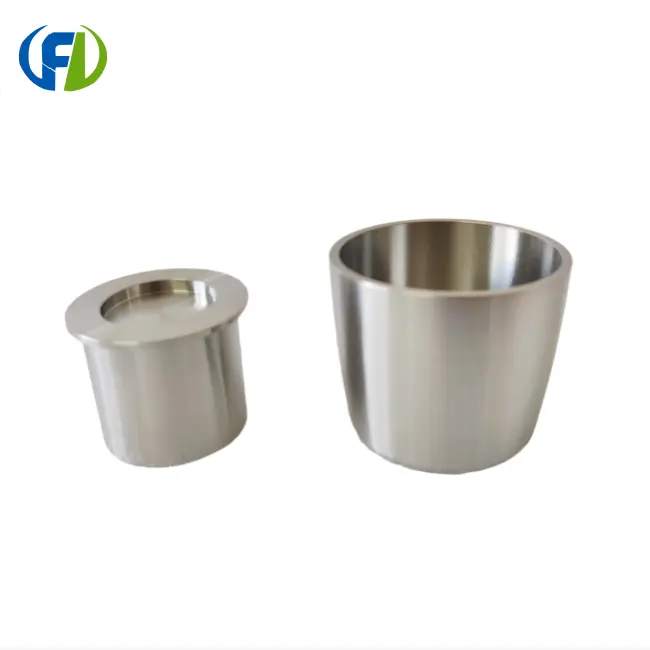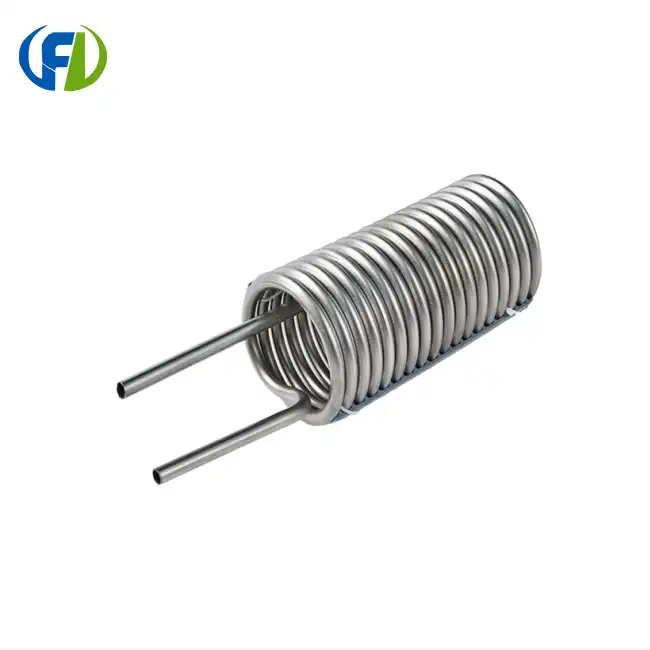Understanding Thermal Shock in High-Temperature Applications
When an object is put under stress by sudden changes in temperature, this is called thermal shock. When used at high temperatures, this effect can cause crucibles and other holding vessels to fail catastrophically. Materials that are used in processes that involve big changes in temperature must be able to handle thermal shock.
Factors Influencing Thermal Shock Resistance
Several factors contribute to a material's thermal shock resistance:
- Thermal expansion coefficient
- Thermal conductivity
- Tensile strength
- Elastic modulus
Zirconium's unique combination of these properties makes it exceptionally resistant to thermal shock. Its relatively low thermal expansion coefficient and high thermal conductivity allow for more uniform heat distribution, reducing the likelihood of localized stress concentrations that could lead to cracking or failure.
Zirconium's Performance in Thermal Shock Scenarios
When temperatures need to change quickly, zirconium crucibles work great. Since they can keep their shape under these conditions, they are perfect for tasks like:
- Analytical chemistry procedures
- High-temperature material synthesis
- Metallurgical applications
The superior thermal shock resistance of zirconium allows for more efficient and reliable operations, reducing the risk of sample contamination or loss due to crucible failure.
Zirconium's Corrosion Resistance: A Game Changer
Corrosion resistance is another critical factor in selecting materials for high-temperature applications, especially those involving aggressive chemical environments. Zirconium's exceptional corrosion resistance has made it a preferred choice in various industries.
Chemical Stability of Zirconium
Zirconium's corrosion resistance stems from its ability to form a stable, protective oxide layer on its surface. This passive film provides excellent protection against a wide range of corrosive media, including:
- Strong acids (except hydrofluoric acid)
- Alkalis
- Organic compounds
- Molten salts
The stability of this oxide layer, even at elevated temperatures, contributes to the longevity and reliability of Zirconium Crucibles.
Advantages in Analytical Chemistry
In analytical chemistry, the corrosion resistance of zirconium offers several advantages:
- Minimal sample contamination
- Extended crucible lifespan
- Compatibility with a wide range of reagents
- Improved accuracy and reproducibility of results
These benefits make Zirconium Crucibles particularly suitable for applications such as alkaline fusions and high-temperature ashing, where chemical inertness is paramount.
Optimizing Crucible Design for Dual Protection
To fully leverage the benefits of zirconium's thermal shock resistance and corrosion protection, careful consideration must be given to crucible design. Optimized designs can enhance performance and extend the lifespan of these valuable laboratory tools.
Geometric Considerations
The shape and dimensions of a crucible play a crucial role in its performance. Some key design aspects include:
- Wall thickness: Thicker walls (e.g., 2mm) can provide enhanced durability and longer service life, allowing for over 100 uses.
- Rim design: Flanged rims can improve handling and stability.
- Taper: Tapered designs can facilitate easier sample removal and cleaning.
Different crucible shapes, such as low form, straight wall, and cylindrical, cater to specific application requirements, optimizing performance for various analytical procedures.
Surface Finish and Treatment
The surface finish of Zirconium Crucibles can impact their performance and longevity. A bright surface finish, as offered by high-quality manufacturers, can enhance corrosion resistance and facilitate easier cleaning. Additionally, some advanced surface treatments can further improve the crucible's resistance to specific chemical environments.
Capacity and Sizing Options
Zirconium Crucibles are available in a range of capacities to suit different analytical needs:
- 5ml to 50ml, with various intermediate sizes
- Custom capacities for specialized applications
Selecting the appropriate size ensures efficient use of reagents and optimizes the analytical process.
Material Grade Selection
Different grades of zirconium (e.g., Zr702, Zr705, R60001, R60901) offer varying levels of performance in terms of strength, ductility, and corrosion resistance. Choosing the right grade for a specific application can further enhance the crucible's performance and lifespan.
Zirconium Crucibles can be made that are fully protected against both thermal shock and corrosion if these design factors are carefully thought through. These crucibles are needed for many modern industry and analytical processes.
Cost-Effectiveness and Long-Term Value
Zirconium Crucibles may cost more up front than some other options, but their long-term benefit is clear. Because these crucibles can be used more than once, they are a cost-effective choice for labs and businesses that work in harsh, high-temperature settings. Taking into account that each crucible can usually handle 100 or more fusions, zirconium is more cost-effective than cheaper choices like porcelain or steel.
Environmental Considerations
Zirconium Crucibles are good for the earth because they last a long time and can be recycled. These crucibles help labs and factories be more environmentally friendly by cutting down on the number of refills needed and the amount of waste that is made.
Conclusion
Zirconium Crucibles talk to a basic progress in materials science, promoting an unparalleled combination of warm shock resistance and disintegration security. Their capacity to withstand exceptional temperatures and powerful chemical circumstances makes them invaluable disobedient in interpretive chemistry, materials explore, and diverse mechanical applications. By optimizing pot arrange and leveraging the one of a kind properties of zirconium, makers can grant courses of action that meet the most asking prerequisites of show day consistent and mechanical shapes.
As the demand for high-performance, reliable materials that can work in harsh conditions rises, Zirconium Crucibles will play a bigger part. Chemical labs and businesses that want to improve their analytical capabilities and operating efficiency often choose them because they are durable, flexible, and cost-effective.
For those in need of high-quality Zirconium Crucibles that offer superior thermal shock resistance and corrosion protection, look no further than Baoji Freelong New Material Technology Development Co., Ltd. Located in Baoji City, China's Titanium Valley, we specialize in the production and export of zirconium, titanium, nickel, niobium, tantalum, and other advanced metal materials. Customers in Australia, Korea, Germany, the US, UK, Malaysia, the Middle East, Taiwan, and other places believe us because we care about quality and making sure our customers are happy. We're proud to meet and go beyond what our customers expect in terms of quality, without sacrificing efficiency.
To get in touch with Jenny at jenny@bjfreelong.com, we would be happy to tell you more about our Zirconium Crucibles and how they may improve your operations. In order to meet your demands for materials that are resistant to corrosion and high temperatures, our team of specialists is here to help.
References
1. Smith, J.R. (2020). Advanced Materials for High-Temperature Applications: A Comprehensive Review. Journal of Materials Science, 55(12), 6789-6810.
2. Chen, L., et al. (2019). Thermal Shock Resistance of Zirconium-Based Ceramics: Mechanisms and Improvements. Ceramics International, 45(7), 8492-8503.
3. Thompson, A.M. (2021). Corrosion Behavior of Zirconium Alloys in Extreme Environments. Corrosion Science, 168, 108595.
4. Patel, R.K., & Johnson, M.S. (2018). Design Optimization of Crucibles for High-Temperature Applications. Journal of Engineering Design, 29(4), 187-205.
5. Wang, Y., et al. (2022). Advances in Zirconium-Based Materials for Chemical Processing Industries. Chemical Engineering Journal, 430, 132707.
6. Davis, E.L. (2020). Sustainable Practices in Analytical Chemistry: The Role of Durable Laboratory Equipment. Environmental Science & Technology, 54(15), 9121-9130.



_1745822015566.webp)
_1745736483765.webp)
_1757907992571.png)